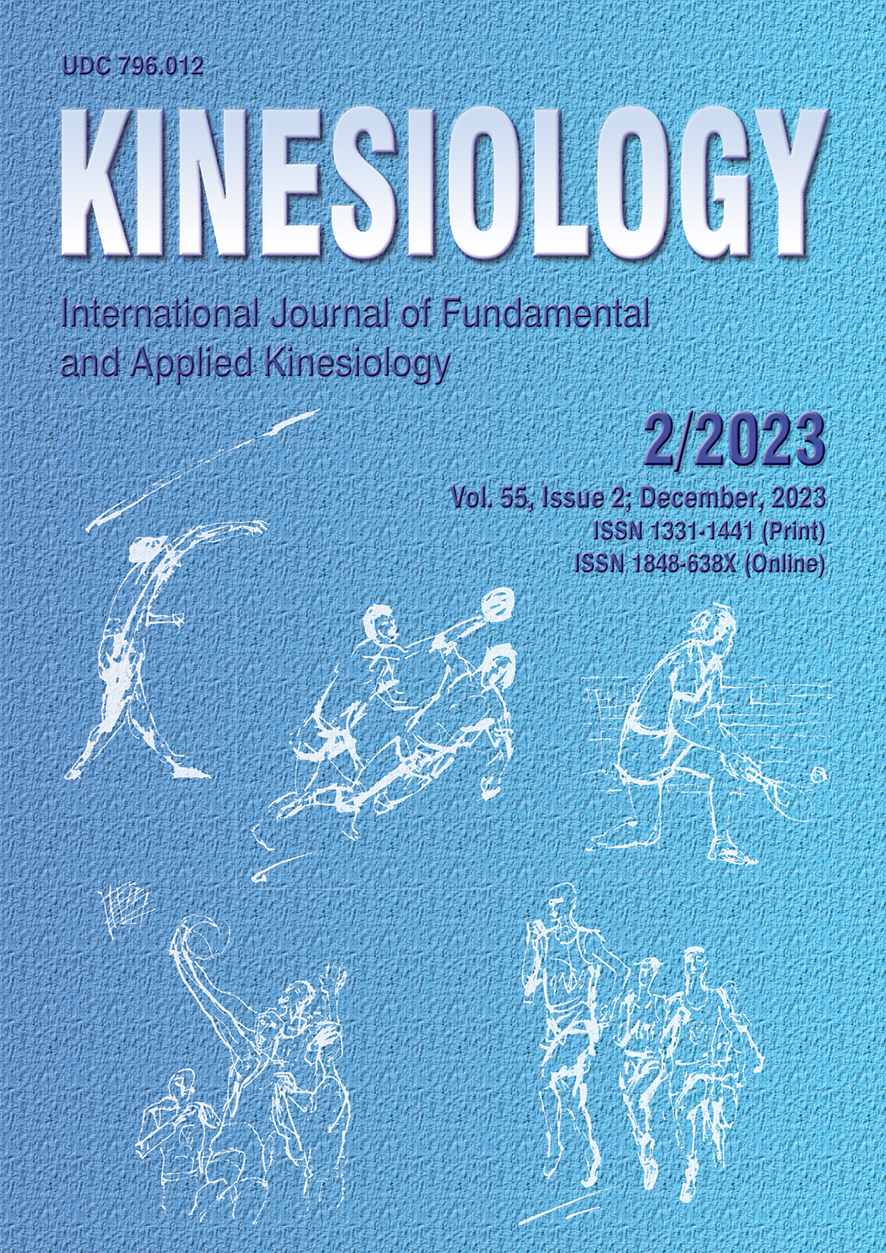EXCESSIVE USE OF THE PREFERRED FOOT IN ON-THE-BALL SKILLS EXECUTION COMPROMISES PERFORMANCE AND TACTICAL BEHAVIOUR OF FOOTBALL PLAYERS
Abstract
This study aimed to compare tactical behaviour and performance of football players with different on-theball skills execution functional technical asymmetry levels and to verify whether functional technical and tactical performance indexes of football players are associated. The sample included 59 football players (14.2 ± 1.5 years of age). FUT-SAT and SAFALL-FOOT were used as instruments for performance analysis. Participants were divided in two groups: higher and lower functional technical asymmetry. Student’s t-test was used to compare the behaviour and tactical performance of the groups, and the Pearson test was used to verify associations between functional technical asymmetry and tactical performance indexes. A significance level of 5% was adopted. The higher functional technical asymmetry group showed less tactical efficiency (t57 = 1.9; p = .05; d = .17) and low performance results in the execution of defensive actions (t57 = 2.1; p = .04; d = .55; t57 = 2.1; p = .04; d = .61) compared to the lower functional technical asymmetry group. No association was found between the functional technical asymmetry and tactical performance indexes (r = -.06; p = .66). It is concluded that the levels of functional technical asymmetry affected the behaviour and tactical performance of players although functional technical asymmetry and tactical performance indexes values are not associated. Future investigations may verify how football players with high and low levels of functional technical asymmetry change their behaviour and tactical performance from different kinds of training.
Key words: decision-making, motor behaviour, motor skills, performance analysis, team sports
Downloads
Published
How to Cite
Issue
Section
License

This work is licensed under a Creative Commons Attribution-NonCommercial 4.0 International License.
At Faculty of Kinesiology we recognize that access to quality research is vital to the scientific community and beyond. Kinesiology is non-profit journal and all costs of publishing and peer review process are covered by the publisher itself or other funding sources like Ministry of Science and Education of the Republic of Croatia. Full text papers are also available free of charge at http://hrcak.srce.hr/kineziologija. There are no restrictions on self archiving of any form of paper (preprint, postprint and publisher's version).
Articles are distributed under the terms of the CC BY - NC 4.0
Kinesiology does not charge any fees to authors to submit or publish articles in our journal.


